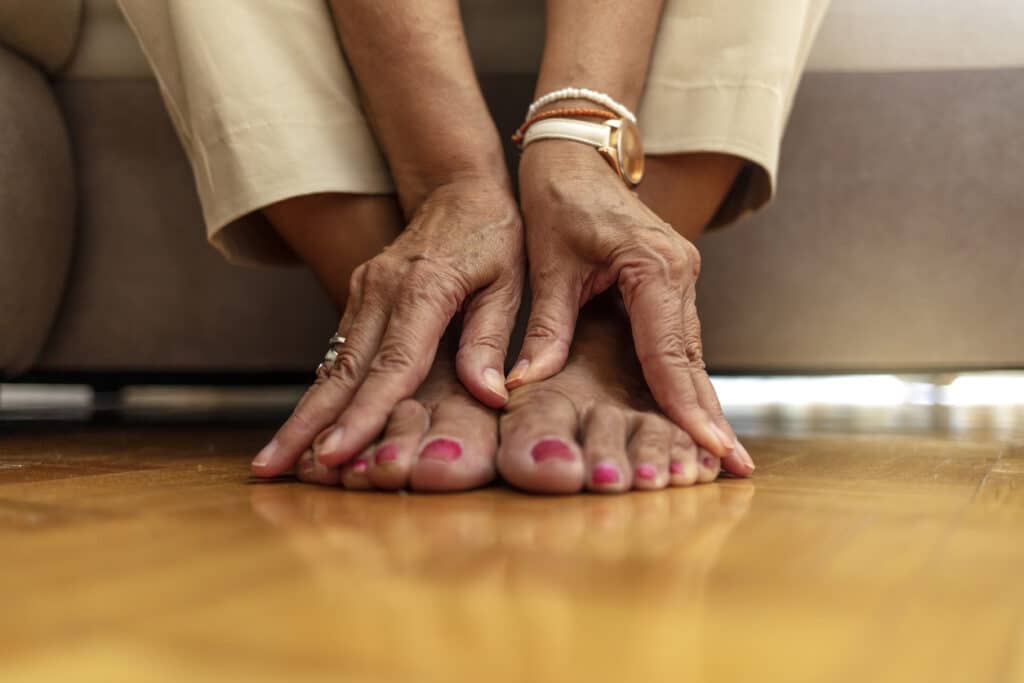
Experiencing foot pain can be a frustrating and debilitating experience for those who suffer from it. Among the various foot conditions that exist, tibialis posterior tendinopathy (TPT) is one of the most common. It is a condition characterized by damage or inflammation of the tibialis posterior tendon, which runs through the inner part of the ankle, under the foot arch, and attaches to the foot bones. One common question people with TPT ask is whether the pain persists even when resting. In this blog post, we will explore this question and learn more about TPT, its symptoms, causes, and treatment options.
TPT can cause a range of symptoms, including pain, swelling, and stiffness. Pain is the most common symptom and usually occurs along the inner part of the ankle and foot arch. However, pain can also occur along the outside of the ankle or the back of the heel. The pain may be worsened by activity, standing, walking, or climbing stairs. It is often described as a dull ache, but it can also be sharp or burning, depending on the severity and location of the injury. It is not uncommon for people with TPT to experience pain even when resting. Some may feel it as a throbbing pain that keeps them from falling asleep, while others may feel it as a constant, nagging pain that affects their quality of life.
Most people assume that foot pain, including TPT, would go away with rest. However, this is not necessarily true. In fact, rest and immobilization may worsen the condition by causing the tendon to weaken and become more susceptible to further injury. This means that even when resting, people with TPT may still experience pain. Moreover, TPT is a chronic condition that tends to worsen over time unless properly treated. Ignoring the symptoms and continuing with daily activities, including exercise, can cause the condition to progress and lead to more severe symptoms, including a collapsed foot arch, foot deformity, and difficulty walking.
The causes of TPT are multifactorial, but they usually involve a combination of overuse, injury, and biomechanical abnormalities. In other words, activities that put excessive pressure on the tendon, such as running, jumping, or dancing, can cause microtrauma to the tendon, leading to inflammation and damage over time. Biomechanical abnormalities, such as flat feet, high arches, or foot pronation, can also increase the risk of developing TPT, as they alter the way in which the foot bears weight and absorbs impact. The condition is more common in women and middle-aged or older individuals.
The treatment of TPT usually involves a combination of rest, physiotherapy, and orthotics. Rest is essential to allow the tendon to heal, but complete immobilization is not recommended, as it can impair blood circulation and weaken the tendon. Physiotherapy is aimed at strengthening the muscles and tendons surrounding the tibialis posterior tendon and improving flexibility, balance, and coordination. Orthotics, such as arch supports, can help redistribute the pressure on the foot and decrease the stress on the tendon. In some cases, surgery may be necessary, especially if the condition does not respond to conservative treatment or if a rupture or tear occurs.
In conclusion, tibialis posterior tendinopathy is a common foot condition that can cause significant pain, swelling, and stiffness. Pain is the most common symptom, and it can persist even when resting. This is because rest and immobilization may worsen the condition by causing the tendon to weaken and become more susceptible to further injury. Therefore, seeking early treatment and modifying activities that aggravate the symptoms is crucial for preventing the condition from worsening. If you are experiencing foot pain that interferes with your daily activities, consult a chiropractor or physiotherapist for proper diagnosis and treatment options. With proper care and adherence to the treatment plan, most people with TPT can recover and return to their normal activities.
If you have any questions or would like to explore further, please book a free, no-charge online appointment with either myself, Nitin Nair, BPT, R/TRO DIP, PT, or another Kitchener physiotherapist at CARESPACE. We are happy to listen and are here to help!

